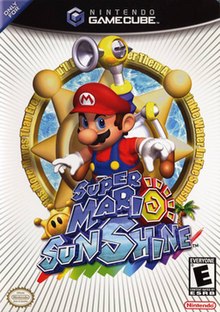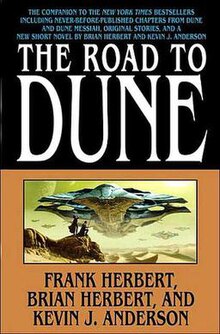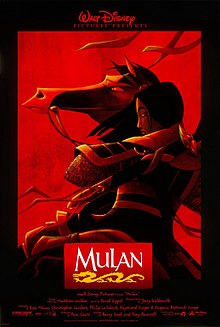When development for the PlayStation 2 began dying down and the gaming world was focused on the following generation of consoles, the PS2 still had some life in it, gaining several notable RPG releases such as Persona 4. Among the other titles that Sony’s first sequel console received was Odin Sphere, exalted for its art direction under developer Vanillaware and director George Kamitani, whose previous credits included the Japan-only title Princess Crown. The original Odin Sphere would see rerelease as a digital title on the PlayStation 3 and as a companion to the refined version, Odin Sphere Leifthrasir. Does the original incarnation still hold up?
The game focuses on five different playable characters who participate in events leading to Armageddon, with a heavy Nordic influence. Each luminary receives plentiful development, with some good supplemental backstory revealed through texts acquired throughout each character’s quest, and a satisfactory ending, with variations depending upon which characters the player use to battle each of the five final bosses, although given the unskippable voiced dialogue in cutscenes, the plot feels forced down the player’s throat. The translation contains an old-world English disposition, and is legible for the most part, although there are some literal portions such as “Demon King Odin,” errors such as “to whence,” and asinine names such as “Muggle” for a fruit and “King Valentine,” among others.
The game mechanics have plenty of good ideas, with each character having their own unique fighting style that eases up on the repetition, although some players won’t appreciate the need to start fresh with a different protagonist after spending hours developing the last. Odin Sphere’s gameplay occurs in various stages with a certain number of toroidal areas where the player has to eliminate all antagonists and receive a score based on the performance in battle, dictating how much treasure they receive as a reward, which includes seeds to plant and grow into consumable food that heals HP and provides hit point experience, ingredients for cooking recipes at restaurants that provide fixed maximum HP increases and supplemental experience, and coins used to purchase items and cooked recipes.
Key to cultivating plants is the release of Phozons when enemies die, which the current protagonist can either absorb to increase Psypher experience for occasional leveling and increased attack power (sometimes alongside the occasional skill that consumes a number of stored Psypher levels when executed). However, players can allow planted seeds to absorb these, in which case they gradually grow and release fruit or other food. In the case of the former, the player can wait for some time and obtain rotted version of the cultivated fruit, which is actually sometimes necessary to formulate certain recipes obtained in stages and used to cook food in restaurants sometimes accessible in between chapters.
The gameplay works alright for the most part, although there are several issues such as the potential difficulty of late-game battles, even on the easiest difficulty setting, and consequential need to spend time grinding for Psypher and HP experience (which players can mercifully accomplish for each character before the final quintet of boss battles). There’s also a heavy emphasis upon inventory management, with players initially able to have up to two eight-item bags, although these don’t become available until each character’s later chapters, and there is potential to waste money on pouches that hold fewer items, with no facilities to store excess items.
The mentioned issue with inventory management is a chief complaint of the original version’s control aspects, alongside the inability during cutscenes to skip through voiced dialogue, sure to alienate hearing-impaired gamers, although the scenes themselves are fully skippable, and players need not rewatch them before things such as tough boss battles. The save system is also fair, with players able to preserve progress in stages in toroidal areas that have shops, and the structure of the game is fairly linear, with little opportunity to get lost. However, there are other issues such as the awkwardness at times of each character’s unique control scheme, along with the fact that the in-game clock doesn’t track time spent in the often-lengthy cutscenes. On the whole, interaction is average.
One of the stronger aspects of Odin Sphere is its aural presentation, with the voice acting, despite the developers forcing it down the player’s throat during cutscenes given its unskippability, being good for the most part, the battle voices luckily not annoying. The soundtrack chiefly composed by Hitoshi Sakimoto and Masaharu Iwata is great as well, with plentiful standout tracks such as the vocal title screen theme, which receives several remixes towards the end, and different tracks in each stage for non-enemy-infested areas and battle toroids. However, there is a technical issue with the same music restarting when the player transitions between visited areas in a stage, but otherwise, the aurals are generally pleasing.
Odin Sphere utilizes a two-dimensional visual style, with character and enemy sprites containing good anatomy and animation, with lip movement during cutscenes as well, not to mention pretty environments and vibrant colors, although the game’s beauty one could describe as superficial. I say so, given the myriad of issues such as characters changing handedness depending upon whether they’re facing left or right, the choppiness when attacking enemies, the cookie-cutter environments for each area of a stage, some reskinned adversaries, and nothing in the way of FMV cutscenes. Generally, the graphical presentation isn’t appalling, but there are various kinks the designers could have worked out.
Finally, including the time spent in cutscenes, finishing all characters’ chapters and the endgame takes somewhere from one to two days’ total playtime, although the in-game clock will certainly show less, and there’s plentiful lasting appeal in the form of PlayStation Trophies, the adjustable difficulty settings, the battle rankings for each area of the various stages, the ability to skip cutscenes and not have to rewatch them (with each scene preserved for later viewing, in case the player wants to view the narrative chronologically), and the general fun of building Psypher and HP levels, although there’s little in the way of sidequests, given the linear structure.
In summation, Odin Sphere definitely is an amazing game in several respects, such as its fast, oftentimes enjoyable gameplay, the enjoyable narrative, the solid sound, the good art direction, and the abundance of lasting appeal, although it does have some serious issues of which players need to be aware before experiencing it such as the bit of grindiness, the overabundance of inventory management, the unskippable voiced dialogue during cutscenes, the average localization, and the various kinks in the visual presentation. Given these various issues, it’s hardly surprising that Vanillaware would refine the mechanics in Leifthrasir, and I would recommend that iteration instead.
This review is based on a playthrough of the Original Mode included alongside Leifthrasir, digitally purchased and downloaded to a PlayStation Vita.
The Good:
+Gameplay can be fun.
+Enjoyable story.
+Solid sound.
+Good art direction.
+Plentiful lasting appeal.
The Bad:
-Can be hard and grindy, even on easiest difficulty.
-Too much inventory management.
-Unskippable voiced dialogue during cutscenes.
-Average, sometimes literal, translation.
-Game’s beauty is superficial.
The Bottom Line:
Not a bad experience, but you may want to play Refined Mode instead.
Score Breakdown:
Platform: PlayStation Vita
Game Mechanics: 6.0/10
Controls: 5.0/10
Story: 7.5/10
Localization: 5.0/10
Music/Sound: 8.0/10
Graphics: 5.0/10
Lasting Appeal: 9.5/10
Difficulty: Adjustable
Playing Time: 1-2 Days
Overall: 7.0/10









